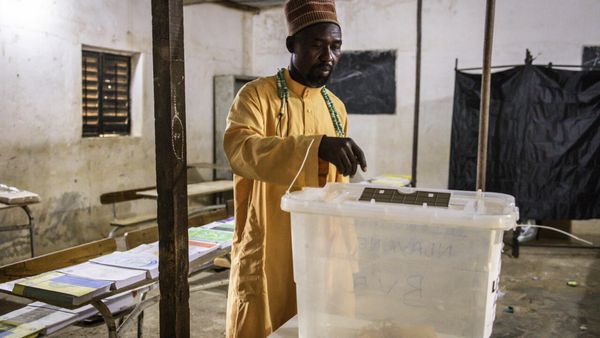When Indonesian designer Vivi Zubedi made her debut on the international stage during the New York Fashion Week in 2018, critics gushed at the elevated abayas her models sported. Her high fashion takes on the traditional Muslim full-length garment married velvet and pearls with leather jackets, baseball caps and batik prints.
Some hailed designers catering thus to women wanting to dress modestly as fashion’s “exciting new frontier”. The market for modest fashion was hailed as being on the rise.
Modest fashion encompasses clothing that covers the body in a conservative manner, often in adherence to religious and cultural beliefs and identities. Though most often referred to in a Muslim context, it is not actually limited to one particular region or religion. Instead it is a concept that has been embraced by people of all kinds of backgrounds across the world.
The research my colleagues and I have conducted looks at female Muslim identities and how they are considered – or not – within the UK fashion industry. Despite the fact that the worldwide Muslim fashion market is projected to be worth $311 billion (£251 billion) by 2024, we have found that many women in the UK still have very little choice within their price bracket.
Not enough choice
Between 2017 and 2021, we conducted interviews with 23 Muslim women in the UK, from seven different ethnicities or cultural heritages: Bangladeshi, British, Indian, Iranian, Nigerian, Turkish and Tunisian. We wanted to understand how, as Muslims living in a non-Muslim majority country, their religious identity influenced their fashion consumption.
To our minds, the UK represented an ideal setting for this kind of study, because it has a strong retail sector and liberal values which encourage individual choice. It is also widely considered to be diverse and multicultural.
And yet, the women we spoke to still struggle to find clothing options they can afford, that they feel are appropriate and support them in adhering to their beliefs. As one interviewee, Izma, put it:
I want to wear something within my modest limits but it is so hard to find such clothes. I wish they start making fashionable clothes which are fully covered. Sometimes I see these modest lines, but these are out of my reach.
For these women, being fashionable is important and so is their Muslim identity. But they are still stuck with having to choose between the two.
You see, I don’t want to wear anything revealing because I am Muslim, but also because I come from a conservative family and certain background and ‘modern’ clothes don’t go well with my family image.
Expressing identity
Many non-Muslim women embrace some degree of modesty in their clothing, in a bid to express personal style while maintaining a more conservative appearance. As the writer Sarah Al-Zaher has said:
Modest fashion is for people who just choose to show less. It is also for people who just prefer the 'relaxed’ or the ‘oversized look’.
In the Muslim world, modest fashion plays a central role in projecting your religious identity. Al-Zaher puts it plainly:
It is not just a short-lived fad; it is a need because it is something that is embedded in our mindset and beliefs that will remain with us for life.
Back in 2018, when London followed New York in showcasing modest runway options, pundits assumed the buzz would push modest fashion into the mainstream and boost the market beyond high-end fashion. However, it still only receives temporary attention from designers and retailers alike.
By 2030, the Muslim population will represent over 25% of the global population. It is growing at twice the rate of the non-Muslim population.
This means that fashion brands have a great opportunity to bridge the gap between fashion and modesty, and properly cater to what is clearly a growing market demographic. However, the gap persists. In 2021, journalist Yasmin Khatun Dewan highlighted the example of Halima Aden, the “trailblazing hijab-wearing Muslim model” who had been hailed in 2017 as an “an icon of inclusivity” only to quit the fashion industry altogether four years later because, as she put it, she had compromised who she was in order to fit in.
Muslim women – and those for whom modesty is a guiding principle in how they choose to dress themselves – shouldn’t have to compromise. They deserve as broad a range of fashion choices as any other. As Ana, another woman I interviewed in 2021, said:
Just because you are Muslim doesn’t mean you can’t have fun wearing what you want to wear. You can still wear really pretty dresses if it’s long, or long tunics or whatever, it can still be fun. It doesn’t have to be just black and drape.
Samreen Ashraf does not work for, consult, own shares in or receive funding from any company or organisation that would benefit from this article, and has disclosed no relevant affiliations beyond their academic appointment.
This article was originally published on The Conversation. Read the original article.







